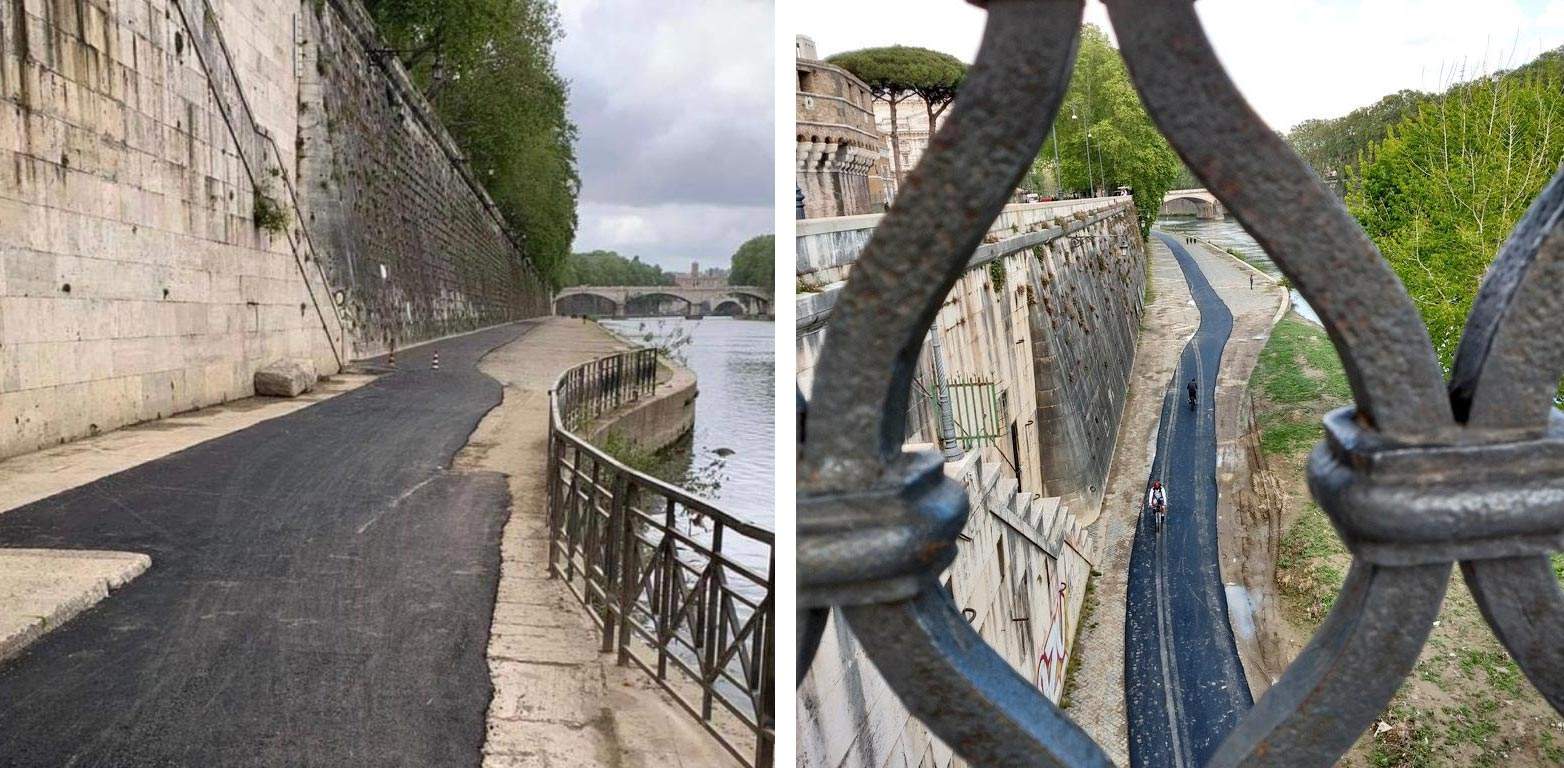Rome, tar on the Lungotevere. Italia Nostra: brutal intervention. The alderman: fake news.
It is fierce controversy in Rome over the intervention that has apparently altered some portions of the stretch of the Lungotevere between Ponte Risorgimento and Ponte Marconi: raising the controversy was, yesterday, the leader of Azione, Carlo Calenda, who posted on social media photos of a stretch near Castel Sant’Angelo. The operations, which began on April 26, are aimed at upgrading the bike path that runs along the road that runs along the Tiber, but Romans found themselves with a pour of asphalt that has aroused outrage and indignation (bipartisan, because Calenda was joined soon after by Matteo Salvini, leader of the League, and Federico Mollicone of Fratelli d’Italia.
“Rome,” Davide Bordoni, a Capitoline councilor of the League, wrote in a note, “needs a real road maintenance plan. Instead, the City Council, following the scandalous images of the tar pouring, accuses justifications of various kinds that are summed up in the phrase ’work in progress’; curious that it always proceeds with spot interventions and ideological background: the intervention on the embankments is a mix of incompetence at various levels that not only represents an aesthetic damage but also puts safety at risk: the bitumen spread in that way produces large amounts of gravel and material on the ground that is slippery and dangerous for those passing by. Instead of apologizing we should take responsibility for the work and get a black-and-white opinion from the Superintendence on the appropriateness of this project, which I doubt they were made aware of.”
A harsh intervention from the Roman section of Italia Nostra also came later in the day: “There is no justification nor can there be any absolution for the brutality of the intervention, of theAssessorato alle Infrastrutture di Roma Capitale, for devastating the embankments of the Lungotevere,” began the association, according to which it would be necessary to go back to how the bike path was before 2005, that is, when it was painted on sampietrini (later the part used as a bike path was paved). “Bicyclists used to pass over the berms simply on a path painted on the ground that defined the bike path versus the pedestrian path. This is how it should remain. The quayside is paved with cobblestones and defined with marble squares just as Giuseppe Garibaldi wanted when he had the Tiber Walls and quaysides designed. The redevelopment of the quays, respecting the constituent materials, should have started from there, a major project of securing the Tiber quays, therefore, and not the inadmissible pouring of asphalt. The Ministerial Decree of November 30, 1999, No. 557 nowhere provides for the uneven and impactful pouring of black asphalt spread, currently, on the quays.” Italia Nostra added that “the citizens who walk along the Tiber embankments far outnumber those who frequent them on bicycles, which, however, are Roma Capitale’s focus right now with the GRAB project. Roma Capitale must exclude the brutalization of the city’s most precious, delicate, and constrained areas from a bicycle project that needs to be radically revised. Bike lanes yes but not on a collision course with the Cultural Heritage.”
Late in the afternoon came the stance of Roma Capitale’s councillor for infrastructures, Linda Meleo, who spoke of “fake news”: “No asphalt casting has covered the sampietrini on the bike path on Rome’s Tiberfront. Carlo Calenda and Andrea Romano [editor’s note: actually the Pd parliamentarian did not intervene in the controversy, it is a homonym] before inventing fake news should inform themselves better. Roma Capitale is resurfacing the asphalt surface, which was made over 15 years ago: this is a routine maintenance operation that no one had thought of before. Calenda’s fake news has been debunked by the many citizens who frequent the city. It is unfortunate that Italia Nostra has also unwittingly fallen into this error by maliciously relaunching fake news. I take this opportunity to remind you that work is going on and that the signage will also be redone shortly. Here is a beautiful photo of Rome that covers all the lies of these hours.”
In the photos: the new asphalt on the Lungotevere.
 |
| Rome, tar on the Lungotevere. Italia Nostra: brutal intervention. The alderman: fake news. |
Warning: the translation into English of the original Italian article was created using automatic tools. We undertake to review all articles, but we do not guarantee the total absence of inaccuracies in the translation due to the program. You can find the original by clicking on the ITA button. If you find any mistake,please contact us.





























